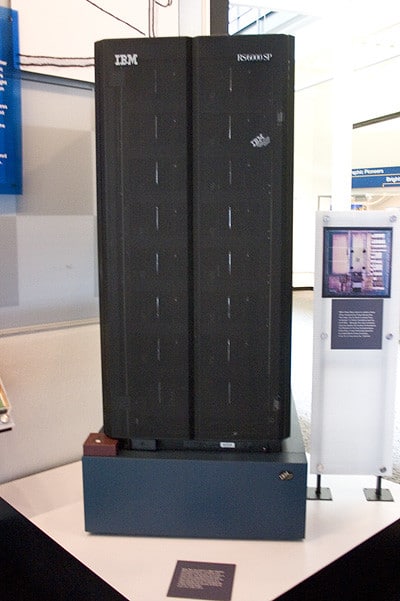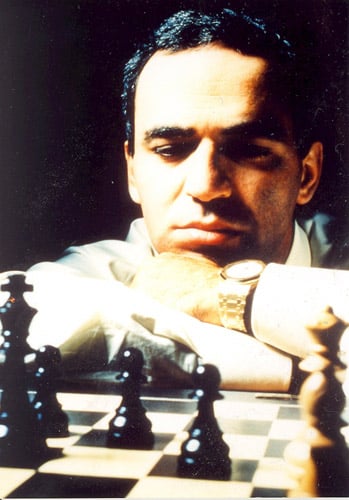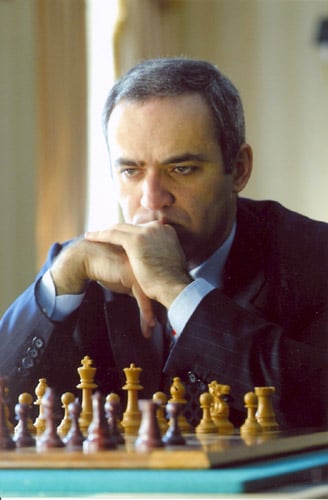Chess is a sophisticated game that requires strategic planning and analytical thinking. The game has been around for centuries, but recently a new player has emerged: Deep Blue. Deep Blue is a computer chess program that has been developed by IBM. It has been designed to analyze chess positions and come up with the best moves for each situation.
Table of Contents
Deep Blue Chess
The primary goal of Deep Blue Chess was to beat the reigning world chess champion, Garry Kasparov. In 1997, Deep Blue was able to do just that, becoming the first computer program to beat a world champion in a six-game match. Since then, Deep Blue has continued to evolve and has become one of the strongest chess programs in the world.
This article will explore the history of Deep Blue, its impressive accomplishments, and its impact on the chess world. It will also discuss the future of the program and its potential applications in other fields. So, let's take a deep dive into the world of Deep Blue chess.
Deep Blue Chess was a chess-playing computer developed by IBM. It is famous for being the first computer to beat a reigning world chess champion in a six-game match. Deep Blue won the match against Garry Kasparov in 1997, becoming the first computer to defeat a human in a chess game.
The computer was developed by a team of IBM researchers led by Chung-Jen Tan. It was equipped with special purpose hardware and software to analyze positions and select moves. Deep Blue chess was capable of evaluating 200 million positions per second, a much higher rate than any human player.
The computer could search deeper into the game than any human player, allowing it to find creative solutions and explore long-term strategies. It could also remember previous games and analyze its opponent's weaknesses. Deep Blue was also capable of playing different styles of chess, such as aggressive or defensive.
In addition to its chess-playing capabilities, Deep Blue chess had two valuable qualities: it was fast and it was reliable. This allowed the computer to make moves quickly and accurately, making it a formidable opponent. After its victory against Kasparov, Deep Blue chess was retired and put on display at the Smithsonian Institution.

What does Deep Blue Chess mean in chess?
Deep Blue was the first computer to beat a reigning world chess champion under regular time controls. It is a chess-playing computer developed by IBM in the early 1990s. Deep Blue was the first computer to win a game against a reigning world champion under regular time controls on May 11, 1997.
Deep Blue was a chess-playing computer developed by IBM in the early 1990s. It was the first computer to beat a reigning world chess champion under regular time controls. Deep Blue chess was the first computer to win a game against a reigning world champion under regular time controls on May 11, 1997.
Deep Blue chess was a special computer system designed specifically to play chess. It was made up of several computers, each with its own processor, memory, and software. The system was able to analyze up to 200 million chess moves per second.
The Deep Blue chess computer system was able to analyze potential moves and draw on vast databases of other chess games to help it make decisions. It was also able to look ahead many moves and anticipate its opponents' moves. This gave it an advantage over human opponents, who tend to rely more on intuition and experience.

Who has beaten Deep Blue?
Deep Blue chess is a chess-playing computer developed by IBM in the late 1980s. It is famous for its victory against world chess champion Garry Kasparov in 1997. Since then, several other computer programs have succeeded in beating Deep Blue.
IBM's chess-playing program Dragon was the first to beat Deep Blue in a match in 1996. Other programs that have successfully beaten Deep Blue include Junior, a chess engine by Amir Ban and Shay Bushinsky; Shredder, a commercial chess program by Stefan Meyer-Kahlen; and Fritz, a program developed by Frans Morsch and Mathias Feist.
In addition to these programs, a number of human players have also managed to beat Deep Blue chess. Grandmasters Viswanathan Anand, Vladimir Kramnik, and Veselin Topalov have all defeated the computer.
In recent years, more powerful chess-playing computers have been developed, such as AlphaZero, which has beaten both Stockfish and Deep Blue in matches.
What did Kasparov say about Deep Blue?
Garry Kasparov, a Russian chess grandmaster, famously lost a match to IBM's supercomputer, Deep Blue, in 1997. Kasparov said the experience was “like fighting an alien” because of the computer's ability to process so many moves in such a short time. He was also impressed by the machine's skill, saying it was “a combination of brute force and human-like positional understanding”.
Kasparov's views on Deep Blue changed over time. In 1997, he expressed admiration for the computer's capabilities and deep understanding of chess. He also admitted that it had given him a good challenge which he had not anticipated. However, after further analysis of the match, Kasparov began to suspect that IBM had given the computer assistance. He claimed that they had given it access to “human-like” strategies and that it had not played in an entirely “machine-like” manner.
Kasparov eventually accepted that Deep Blue had beaten him on its own merits, but he maintained that the match had demonstrated the importance of collaboration between human and machine. He said that it was only through the combination of human creativity and machine power that the world would be able to progress.
Is Deep Blue better than stockfish?
Deep Blue and Stockfish are two chess-playing computers developed by IBM and a team of open-source contributors, respectively. They are both used to determine the best move in a chess game. Deep Blue was the first computer to beat a reigning world champion, Garry Kasparov, in a six-game match in 1997. Stockfish is the strongest chess engine available, and is the engine used by the majority of top-level chess players to analyze games and prepare for tournaments.
There are many factors that make Deep Blue and Stockfish different. Deep Blue is a commercial product and is only available to buy for serious chess players. Stockfish is open-source and free to use. Deep Blue is also limited to playing chess and can't be used for other games. Stockfish, on the other hand, is an incredibly powerful chess engine that can also be used to play other games. Overall, Stockfish is generally considered to be a better chess engine than Deep Blue.
The differences between Deep Blue and Stockfish can be seen in their playing styles. Deep Blue was programmed to focus on certain openings and strategies, while Stockfish is more versatile, able to adjust its strategy more flexibly. Deep Blue also has a weaker endgame than Stockfish, as it was not programmed to understand the nuances of chess endgames. Stockfish, on the other hand, has a strong endgame, as it has been specifically designed to understand the subtleties of endgames.
When it comes to speed and accuracy, Stockfish is the clear winner. Deep Blue was designed to calculate millions of moves per second, while Stockfish can calculate up to 70 million moves per second. Stockfish is also more accurate than Deep Blue, as it has been designed to make fewer mistakes.
Deep Blue chess was an incredible accomplishment in the history of artificial intelligence. It was the first computer to defeat a reigning world champion in a six-game match. It demonstrated the potential of computers to calculate and reason better than humans, and it has since been surpassed by other programs.
The legacy of Deep Blue is far-reaching. It has shown that computers can be used for more than just playing games. It has also encouraged the development of new and improved AI techniques and applications. Deep Blue showed us just how powerful computers can be, and it is a reminder that AI is here to stay.
Deep Blue is an important milestone in the history of AI, and its influence is still felt today.
If you liked this post you should read Live Chess Online.






